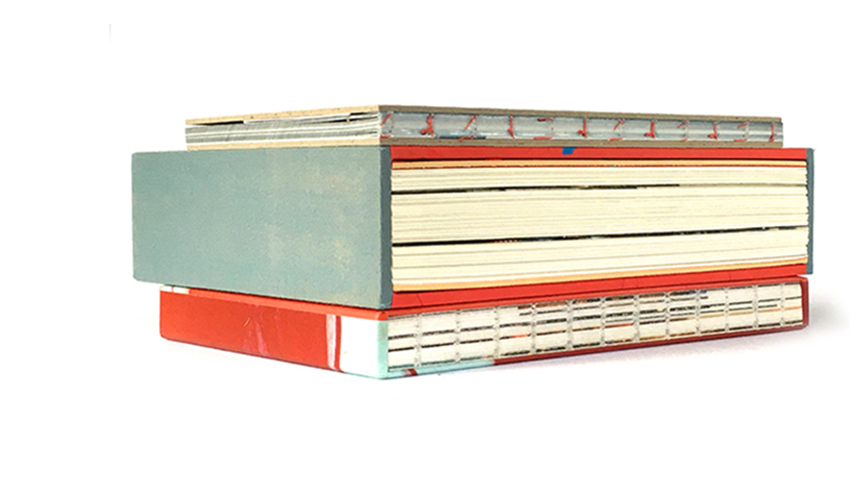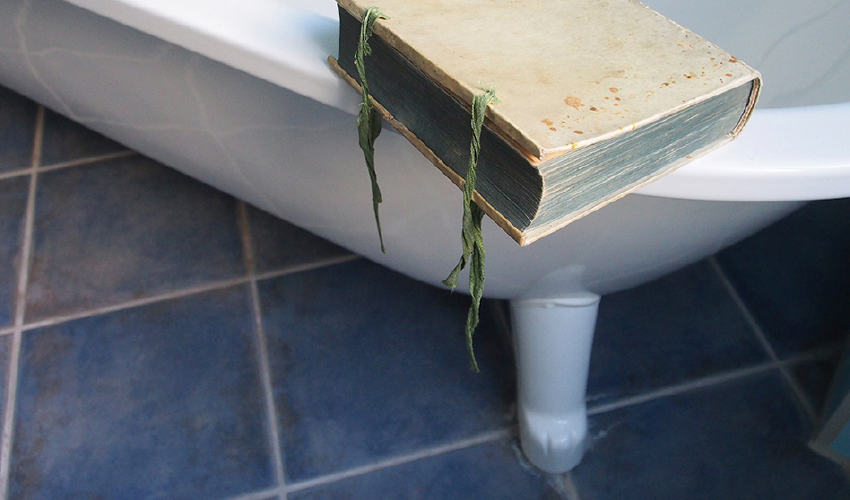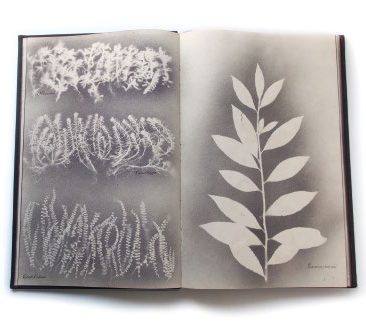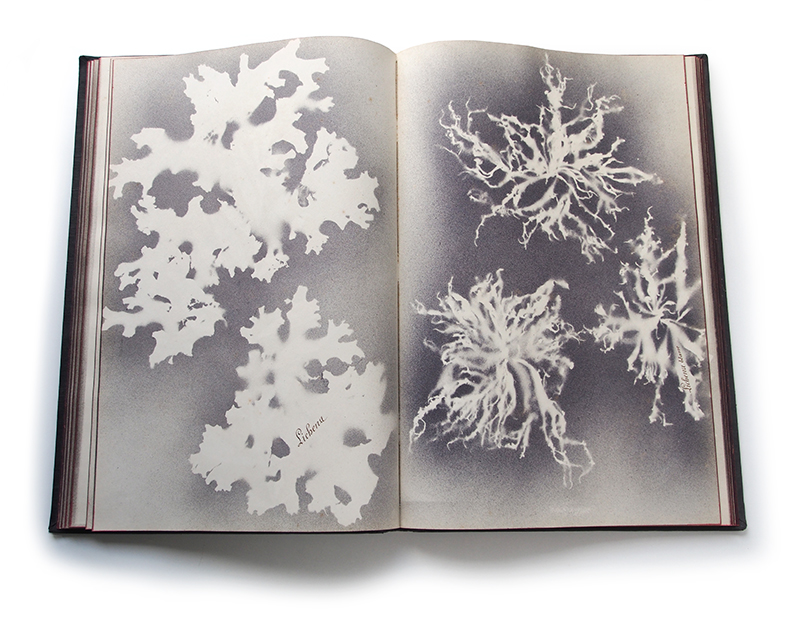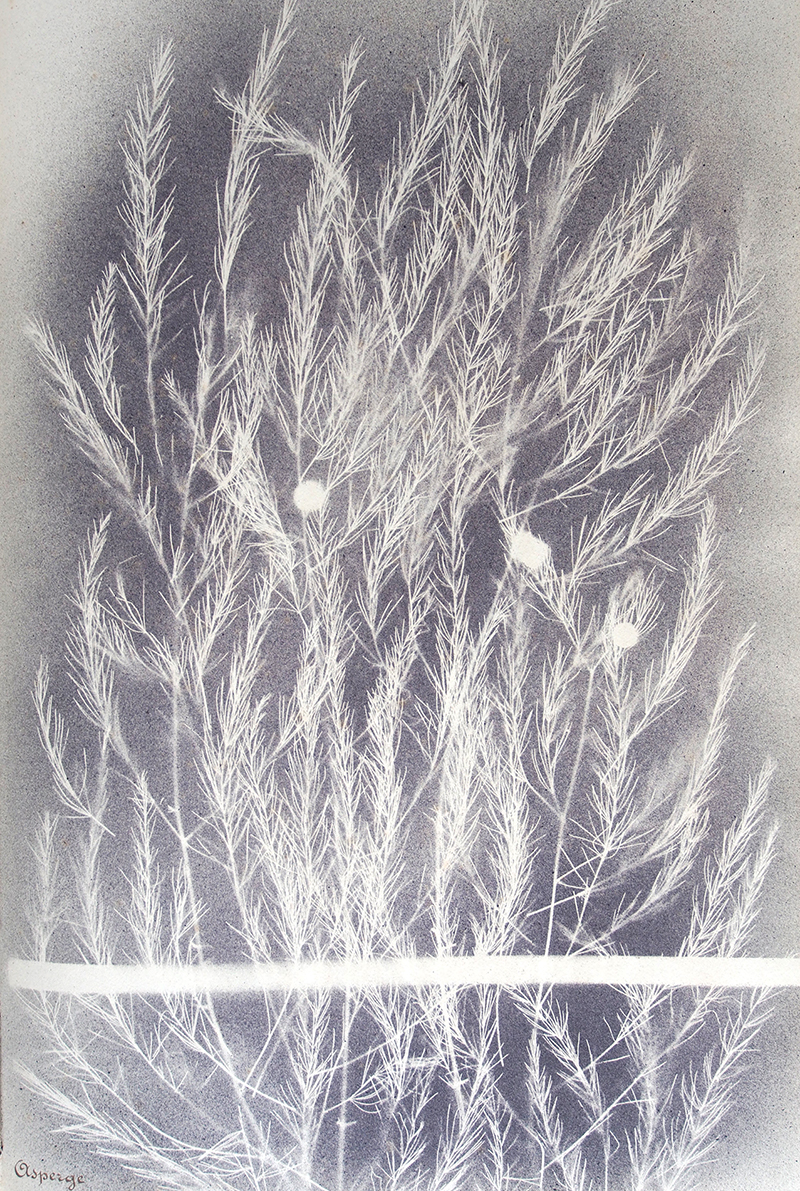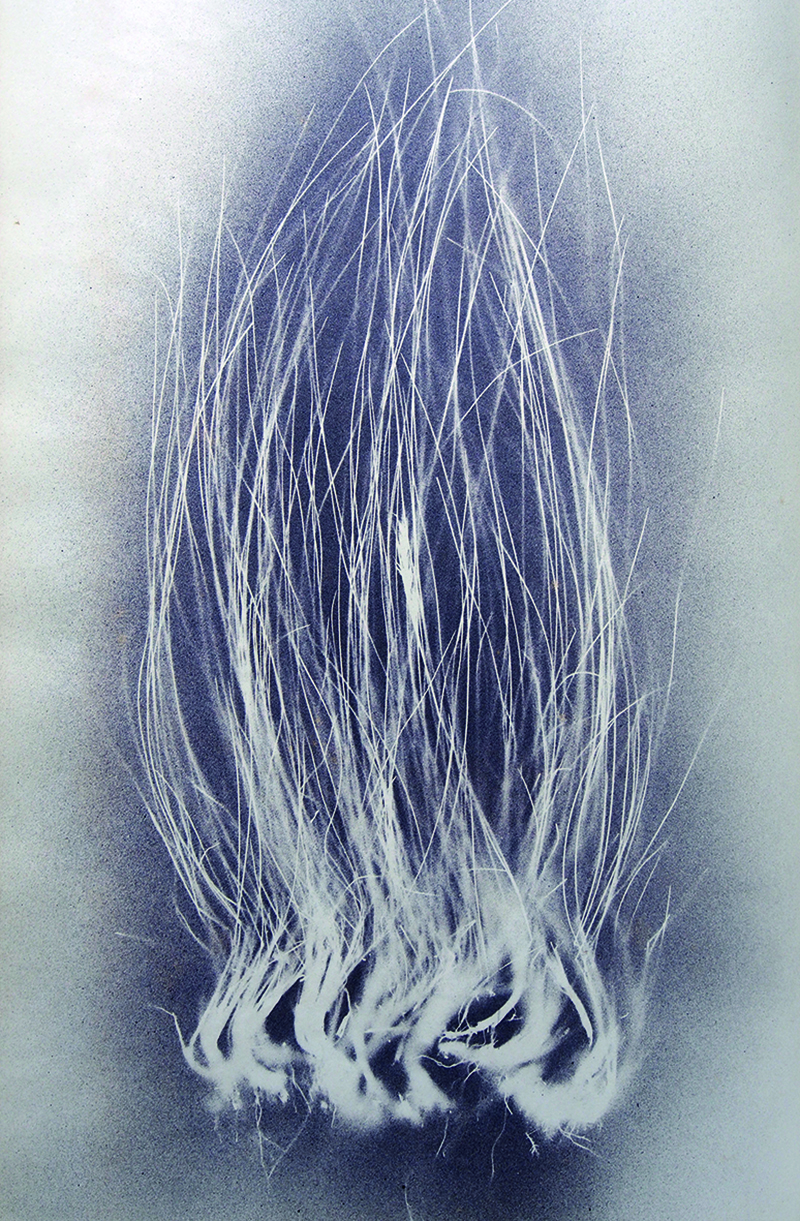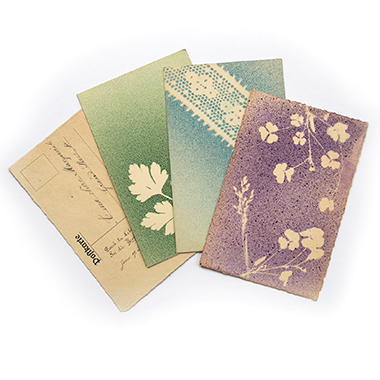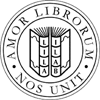Art Experiment between Photography, Nature Prints & Modernist Photograms – A remarkable botanical album
1. October 2020
Anna Atkins (1799–1871), a Victorian botanist, was surrounded by science throughout her whole life. For her lifelong love of botany, Atkins turned to photography, becoming the first person to publish a book illustrated with photographic images.
In 1842, Sir John Herschel, the astronomer and photography pioneer, informed Anna’s father of a new invention called the cyanotype, a refinement of Talbot’s process that proved expensive, dangerous and unstable. Herschel process involved the brush application of a compound of ammonium ferric citrate and potassium ferricyanide onto a sheet of paper, that would be subsequently dried and left in the sunlight with a flat object on top of it. After exposing the paper to enough light, the paper would be washed in water, revealing the image of a pale blue object on a dark blue background that would remain intact. It was this invention, previously used to reproduce architectural drawings and designs, that influenced Atkins to create her seminal book. Guided by her interest in sea algae, she decided to apply this technique to this marine specimens, as a means of preserving her observations and overcoming “the difficulty of making accurate drawings,” ushering in a whole new medium for scientific illustration. She self-published a pioneering volume Photographs of British Algae: Cyanotype Impressions, with the dedication: “To my dearest Father this attempt is affectionately inscribed” in 1843.
Capturing the intricacies of plant life, she created strangely beautiful algae illustrations that were somewhat abstract in their simplicity. The images were surprisingly modern-looking, with outlines of the specimens delicately crawling across Prussian blue backdrop. Using the innovative technique developed by Sir John Herschel, she created images that were, not only scientifically groundbreaking, but austerely beautiful. For this inventive approach, she is today regarded as the first female photographer and a pioneer of scientific illustration. Sitting on the border between art and science, Anna Atkins’ cyanotypes photograms are characterized by their timeless beauty. Due to the abstraction of the silhouettes on the photographic paper, the work feels almost contemporary.
The modernist beauty of her work inspired similar works that followed her later; works that not include actual specimens but direct impressions of natural specimens. Nature printing, brought to the public’s attention at the Great Exhibition in 1851, was such a process. After seeing the exhibition, the Viennese printer Alois Auer was inspired to refine and perfect it. His „Naturselbstdruck“ (nature self-print process), which he debuted in 1853, was a machine-age adaption of the ancient idea of the ectypa process where leaves were inked and an impression made on a sheet of paper. (see other blogs)
Another process which looks similar in style is the air-brush, spray – paint or spatterwork paint technique used in the album below and to produce post-cards at the end of the 19th century.
Spatter-work Herbarium by an unknown Artist
Dessin. (France ca. 1890). A book of spray paint images of botanical specimens with a spray painted title consisting of about a thousand seeds arranged to form the word ‘Dessin’ and more than 170 spray painted images of botanical specimens on 145 pages, 63 blank pages. Folio (495 x 325 mm). The images are generally executed in black paint resulting in images with a highly differentiated palette of black, grey and white hues resembling nature prints, cyanotypes and – quite surprisingly – modernist photograms in their visual appearance. One image with maroon paint, most with the French names of the plants written in brown ink in a French batard coulée script. 4 images with hand-colored silhouettes of paper cut-outs of butterflies and other insects, birds and even horses. […] Contemporary black cloth, red edges. Front cover with manufacturer’s letter-press printed label with 3 blank lines for a manuscript title above ‘Fabrique de Registres. Imprimerie – Librairie Eyboulet, Ussel’. Covers slightly rubbed. An overall fine copy.
A remarkable botanical spatter-work album comprising images of botanical specimens made directly from the specimens. Spatter-work is a process of reproducing designs by laying them on a surface and spattering the exposed parts with a tinting fluid. It seems that the spray paintings here were made directly on the album leaves after binding. The 170 spray paintings begin with ferns and include various leafy plants, grasses, a few flowers, and end with an unlabelled specimen of Cannabis sativa.
This kind of spraying technique renders a clear silhouetted image of single flat leaves, whereas more three-dimensional parts of finely textured plants tend to blur slightly but this effect doesn’t compromise the artistic value of the image on the contrary it enhances a distinct feeling of the three-dimensional nature of the specimens. A precursor to this technique could be seen in the application of spatterwork to a certain variety of Mauchline Ware the so-called Fern Ware introduced about 1870.
The book bears no name of the botanist/artist who produced the spray paintings, but the album bears the name of the printer, bookseller and stationer Eyboulet in Ussel, flourishing there from 1888 to 1949, trading under various names.
price on request




